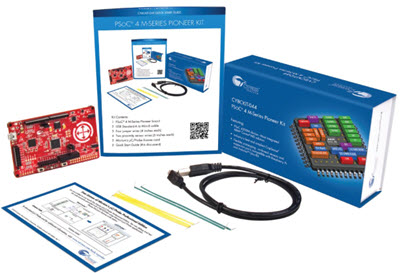|
For novel ideas about building embedded systems (both hardware and firmware), join the 35,000 engineers who subscribe to The Embedded Muse, a free biweekly newsletter. The Muse has no hype and no vendor PR. Click here to subscribe.
|
Published 12/08/2004
A company I visited last week bases all of their products on Wind River's popular VxWorks RTOS. Yet engineers told me they can't talk to Wind's people anymore. Huh? I've had no problem contacting them. Dial (800) 545-WIND, or email info@windriver.com.
No, the developers said, the problem is that the sales folks there seem to be speaking a different language.
Oh.
I've noticed the same thing myself. The company is now billing themselves the "global leader in Device Software Optimization (DSO)." And here I thought they sold RTOSes, compilers, and other development tools for embedded systems.
Here's an excerpt from a recent press release:
ALAMEDA, Calif.--November 1, 2004--Wind River Systems [NASDAQ: WIND], the global leader in Device Software Optimization (DSO), today unveiled the largest technology release in the company's history, with the announcement of Wind River's Workbench 2.2, General Purpose Platforms, Market Specific Platforms and Platform for Network Equipment, Linux Edition. These products represent the industry's first enterprise-wide device software solutions designed to make the entire device development-and-support lifecycle more efficient and effective.
"More and more, products are being differentiated through innovation of device software. To succeed, companies must implement a Device Software Optimization strategy," said Theresa Lanowitz, research director at Gartner Inc. "By using standards-based solutions that offer support for end-to-end development, companies can accelerate software-driven innovation while ensuring that connectivity and security become a part of every device."
Huh? Grand words indeed, but what's the product? The rest of the release never really defines "platform," but after a telephone conference with the company it became vaguely clear that this is rather like a super-duper IDE, with some cool bells and whistles thrown in. I'm sure it's a killer product and don't want to disparage their efforts. Or at least not the efforts of their engineers. But what is this gibberish?
The press release has nouns, verbs, even an adjective or two, used grammatically. But it's marketing doublespeak, nearly devoid of meaning. Why drape the product with phrases their customers - engineers - don't understand?
Wind River's co-founder Jerry Fiddler, in his keynote speech at this year's Embedded Systems Conference, said: "There's no such thing as an embedded market. The device is much more interesting than the embedding."
If there's no such thing as an embedded market than I guess I've wasted the last 30 years of my life. We build devices, sure, but every thing we make is an embedded system. Maybe Orwell's Newspeak would remap "embedded" to "device software optimization." And Newspeak might also claim there's no construction industry, just "housing" and "office" and "retail" businesses. But it's hard to deny the fact that a huge and very viable construction industry provides the pool of workers and tools that build a vast number of different kinds of structures.
I've always admired Wind River. They suffered brutally through the dot-com bust which nearly destroyed their core telecomm/datacomm market. Revenues fell by half and losses between 2001 and 2003 exceed a half billion dollars. But the company is in turnaround with sales creeping upward and a profitable quarter behind them. They're doing a lot of things right.
Wind tells me that they're using Device Software Optimization because it better describes today's interconnected nature of electronic products and accelerated time-to-market. To me DSO it sounds like tuning slow code, which is an important part of building a decent product. But it's a subset of building embedded systems, which has always dealt with networking and short schedules.
What do you think? Is this doublespeak or is Wind River, the biggest embedded company populated with some really smart people, on to something important?


